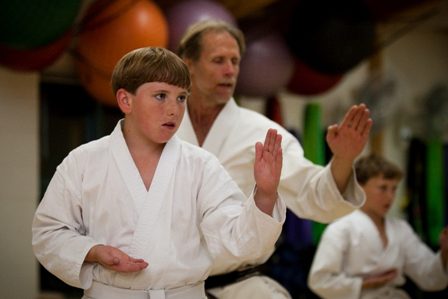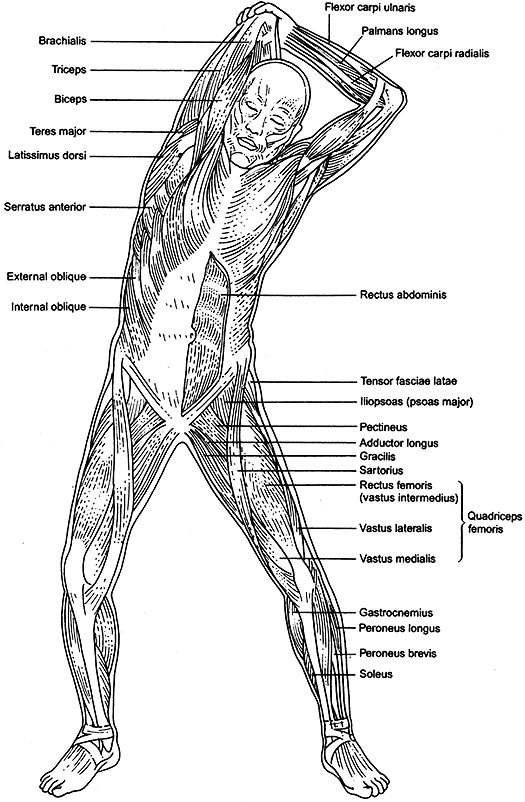As I have written before, the system I train in has strong influences from a man named Fujita Seiko (1899-1966), who was the last inheritor of Wada-ha Koga Ryu Ninjutsu. Despite being the last real ninja (employed by the Japanese government), he strangely enough never became that famous. But when I think about it, isn’t that part of being a ninja?
Fujita was a quite remarkable man who apart from being a researcher, profilic author and martial artist, had a strange set of skills that I will write about sometime in the future. Eating poison, cutting out chunks of his own flesh, and other masochistic rituals was part of his daily routine…
Anyway, for now I would like to give you my very own translation of an article Fujita wrote in his book on Kyusho-jutsu (anatomical pressure points). The article shows Fujita’s deep understanding of combat, and will quickly flush away your eventual ideas of ninjas flipping out and killing people with flying somersault-attacks, or other similar fantasies you might have.
Enjoy the article below! Follow it thoroughly and you are bound to get a headache!
———
Regarding Asymmetrical Actions
Successfully manipulating the vital points often requires a certain flexibility of the wrist, of which one will understand the importance of only by doing the suitable exercises.
Moreover, it is necessary to control ourselves to the degree of at least being able to make a movement with one arm or hand, and another movement (without relation) with the other hand. This is something nobody is able to do without training. As an example, an “ordinary” brain tends to close both fists or open both hands at the same time. Proper training is essential to succeed in closing a hand freely while opening the other one.
One will also need, for example, after executing the first attack (in a double or triple strike combination), to practise the case where your second or third strike quickly needs to hit another vital point in order for the combination to succeed. This skill of striking different, asymmetrical, targets takes a long time to acquire, and in the end shows who are the true followers of the “Art of the vital points” [Kyusho]
As you can see by now it, “the Art of vital points” distances itself openly from traditional martial arts. It requires you to be a real master.
If I decided to be satisfied with this conclusion concerning asymmetrical actions… you would pass on to the next chapter without having become aware of the importance – and your wonderful lack of control – of your own body.
Therefore, here is what we are going to do:
1. Put down this book opened on the table, so you are be able to read while having your both hands free. Have you done it? Good. [Since you use a computer it’s even easier]
2. Naturally open your two hands (separated from each other), fingers spread with palms upwards, and elbows should have a little angle. This detail is not very important; it is an only question of being able to move freely. You can even put the back of each hand on each thigh.
3. By lowering your eyes (normally you should know where your fingers are, but let us assume that you are one of those who do not know it), look at YOUR LEFT HAND and note that your thumb is the only finger which is opposing the four other fingers: touch the top of your thumb with the top of your index, then middle finger, then annular finger, then little finger. Easy? More or less? Good.
Now, having touched index-middle-annular-little go back up little-annular-middle-index. THEN AS QUICKLY AS POSSIBLE. It is already less easy? You “stutter”? However there is nothing asymmetrical yet… Well, let us pass to the next level.
4. Now make exacly the same thing WITH YOUR RIGHT HAND, without making anything with your left hand.
5. Make exacly the same thing WITH YOUR TWO HANDS, your two thumbs touching every finger in a descending line and by going back up, without gaps, all at once. Then the thumb of one hand goes down (index-middle-annular-little) while the other hand goes back up (little-annular-middle-index) at the same time.
6. We now will begin the asymmetry. Each hemisphere of your brain will have to deal with “its hand” (right hemisphere = left hand, left hemisphere = right hand).
YOUR LEFT HAND will twice alternate the thumb with each finger, while going down and while going up… WHILE YOUR RIGHT HAND will alternate the thumb only one time with the fingers, while going down and while going up. Easy? Liar! Nobody can make it without having practised this for a long time.
7. Since that is easy (let us suppose), reverse it; right hand two oppositions and one with the left hand, and seek for yourself how to make it more complicated, for example one fast touch of the thumb with the index, two with the middle finger, three with the annular one, four with the little finger. The variations are not infinite… but almost!
8. I had not said anything special on the rate or rhythm to be adopted. Most probably, for #6 and #7, the thumbs of your two hands passed at the same time from the index to the middle fingers, annular and littlefinger, a hand alternating the thumb once and the other hand twice. Normally you should not have been synchronized.
Now that I said it to you, start again QUICKLY, each hand not worrying about if the other hand is early or slow, “every man for himself” say forget hemispheres! Easy, isn’t it?
9. I will not write a whole book on the way of using your fingers. I suppose that you have understood the principle… but let me continue, because that was not all. It is now necessary to short-circuit your famous intellectual brain… which thinks, but can nothing make (all the orders are in “the hands” of the “reptile brain”)! Therefore, since you know how to speak and count… count out loud at the same time as you exercise your fingers (with the previous exercises), but not without thought. You should count with constant attention, like this: 1-2-3-4-5/5-4-3-2/2-3-4-5-6/6-5-4-3/3-4-5-6-7/7-6-5-4…
That is the way of counting, but more differently, you can also recite a poem. That is what some samurai did to release themselves from the “intellectual brain”, and thus made them use “the reptile brain”, which you need in order to accomplish tasks like these.
One is never “free” with a word, whatever it is.
The samurai were unaware of that it functioned like this, and again one must admire the intuition of the old. One may advance in knowledge, but one will never be able to go further (nor even as far) as our old ancestors went in the pursuit of self-control.
This exercises with the fingers can help the balancing your two cerebral hemispheres and can make you progress in other fields of life as well. This was merely a okuden* lesson, but one of the more secret.
Do not thank me… you must never say “thank you” … it is insufficient and too mechanical. Instead we must thank from the heart.
End of translation.
_______
Note:
* Okuden refers to “inner teachings” and means it is knowledge passed on to more advanced students.



3 Comments